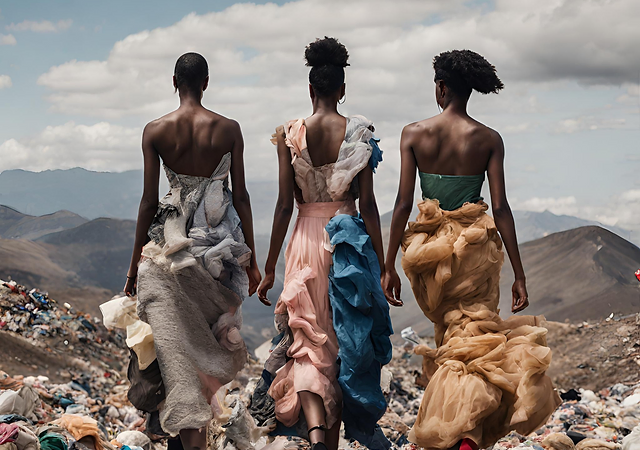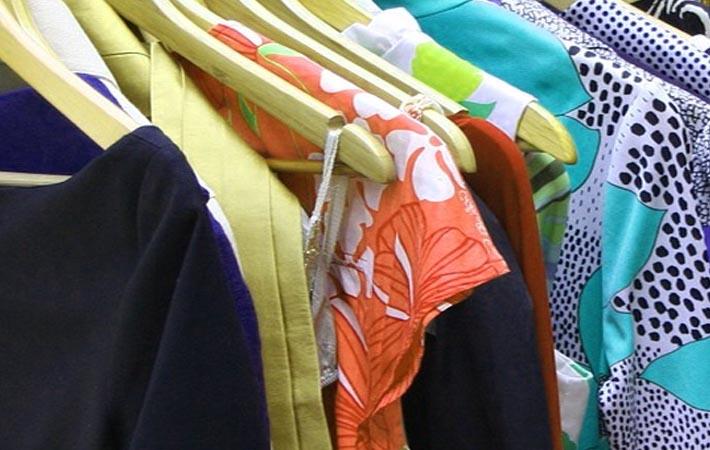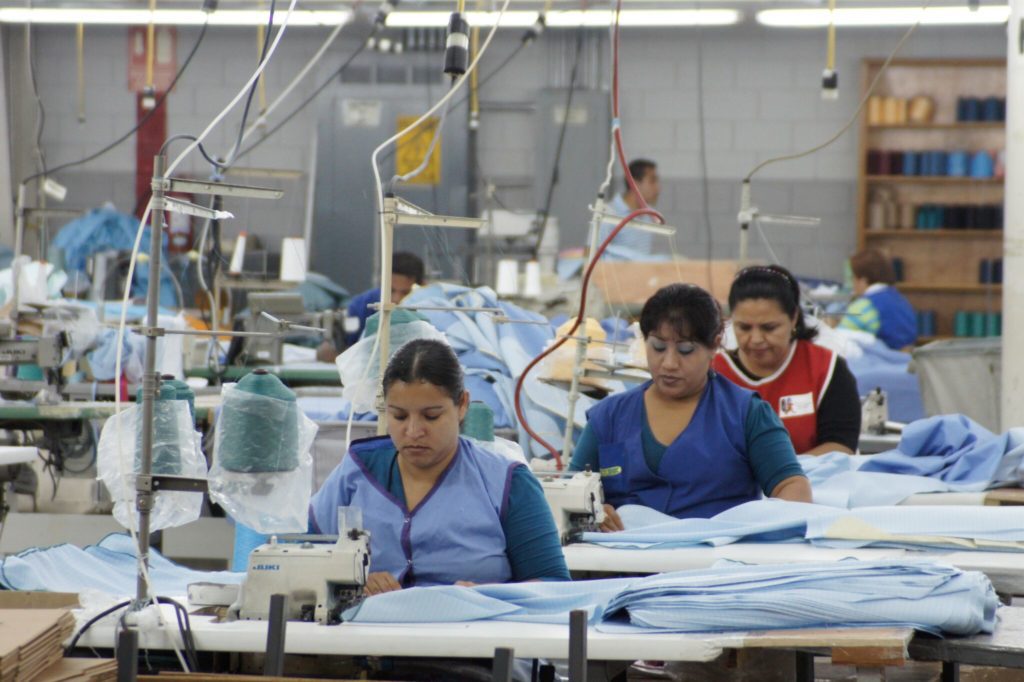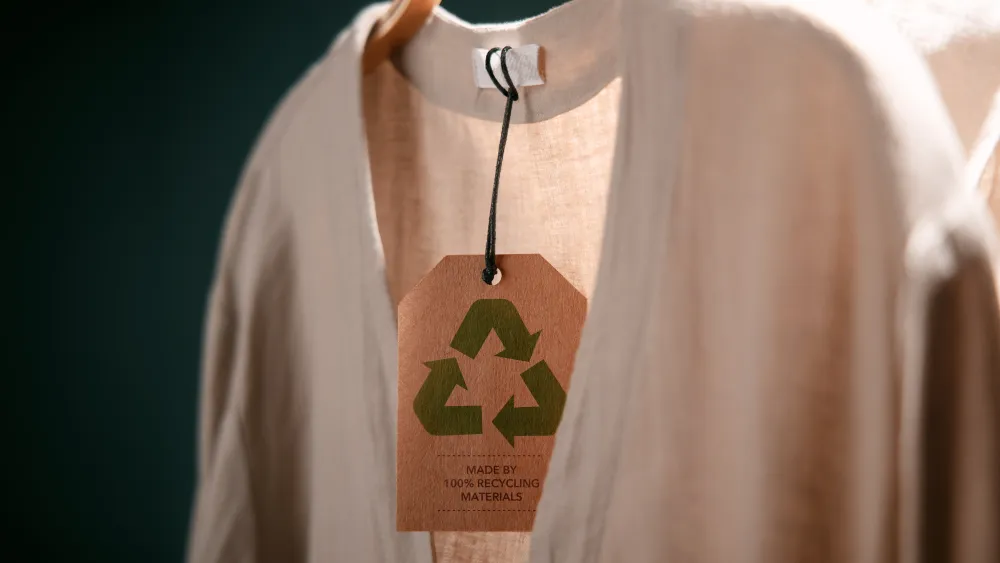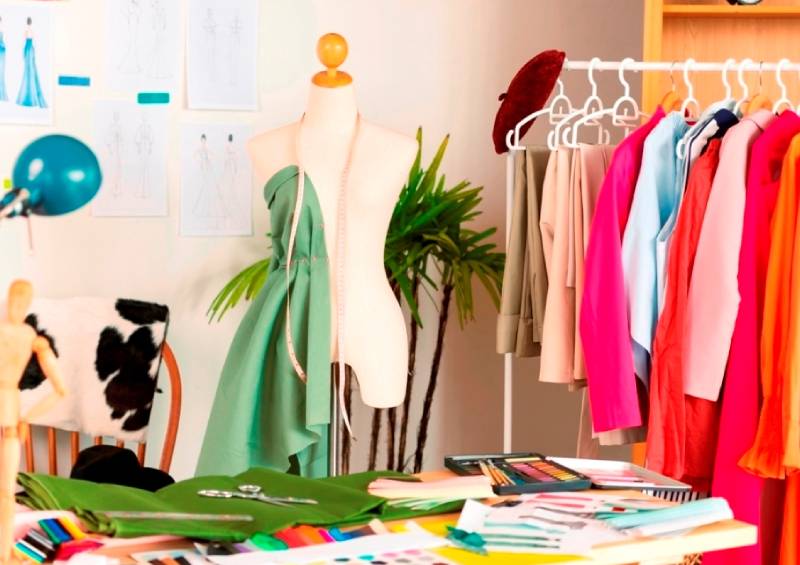FW
Cambodian garment manufacturers and the association that governs them are failing to meet the standards set by UN’s Guiding Principles on business and human rights. This was evident by the lethal violence against workers during garment strikes in January, when five people were shot dead and scores wounded by state forces, the International Federation for Human Rights (FIDH) has said.
The Cambodian garment sector is ‘mired in ongoing human rights violations’ and the Garment Manufacturers’ Association in Cambodia (GMAC) has ‘refused to condemn the lethal use of force against striking workers,’ a briefing paper released by FIDH stated. “Cambodian manufacturers and GMAC have clearly failed to respect workers’ rights,” in light of the guiding UN principles, the statement said, adding, “Brands have failed to prevent and mitigate adverse human rights impacts by their business partners, and have failed to exercise leverage with Cambodian suppliers and business associations to prevent such abuses.”
In addition, the report says that over 100 GMAC-affiliated factories sued six of the trade unions involved in organizing December’s strikes. However, FIDH also adds that the “victims of state repression and companies’ retaliation following garment workers’ legitimate exercise of their right to strike” are unlikely to receive proper or fair redress though the courts.
Criticizing the report, GMAC Chairman Van Sou Ieng has said that FIDH must prove the allegations against the association and cannot accuse other without evidence, under the name of human rights.
He further said the International Labor Organization’s (ILO) Better Factories Cambodia program has concluded every year for the past 12 years with 85 per cent of all the factories getting inspected in compliance with the labour law and the international core labour standards. He has also challenged the authors of the FIDH to identify another country with such a high rate of compliance.
www.fidh.org
 Cotton is a principal cash crop in India and a major raw material for the domestic textile industry. The textile industry in India contributes about 14 per cent to the industrial production, 4 per cent to the GDP and 11 per cent to the country’s export earnings. It’s the second largest employment generator after agriculture. Hence, growth and all around development of cotton and cotton industry has a vital bearing on the overall development of Indian economy.
Cotton is a principal cash crop in India and a major raw material for the domestic textile industry. The textile industry in India contributes about 14 per cent to the industrial production, 4 per cent to the GDP and 11 per cent to the country’s export earnings. It’s the second largest employment generator after agriculture. Hence, growth and all around development of cotton and cotton industry has a vital bearing on the overall development of Indian economy.
Rise in cotton production
India is the only country to grow all four species of cultivated cotton: Gossy 
piumarboreum and herbaceum (Asian cotton), G. barbadense (Egyptian cotton) and G. hirsutum (American Upland cotton). India produces a large number of cotton varieties and hybrids. Cotton is produced in three zones: North, comprising of Punjab, Haryana and Rajasthan; Central, comprising of Maharashtra, Madhya Pradesh and Gujarat and South, comprising of Andhra Pradesh, Karnataka and Tamil Nadu. Besides these nine states, cotton cultivation has gained momentum in Orissa as well.
With increased acreage and advent of Bt cultivation, the country produced 5.90 million metric tons of cotton in 2011-12 as against 5.76 million metric tons in the previous year. India has once again retained its position as the second largest cotton producing country in the world, after China.
In 2012, in the first half of the year from April to September, due to piling up of inventory, demand for yarn both domestically and internationally was subdued faced with high raw materials prices and difficulties to access credit by spinners, declining prices of cotton yarn and competition from chemical fibres. Subsequently, with a slowdown in demand and large finished goods inventory, capacity utilization by spinning mills dropped down to one-third of optimal utilization, thereby further declining the operating profit margin of spinners.
However, with a view to arrest downward pressure and help stabilize prices of cotton and cotton yarn, the government India reinstated DEPB benefits on export of cotton yarn and cotton and removed cap on cotton exports. Still the operating profitability of spinners remained under pressure which affected overall demand for cotton domestically and internationally the mills preferred to purchase cotton to meet immediate requirements rather that building lean season requirement. However the Cotton Season 2012-13 has seen an improvement in domestic consumption at an estimated 256 lakh bales as against 253.4 lakh bales in 2011-12.
Export-import measures
The government had decided to allow exports of cotton under
OGL subject to prescribed registration procedures from October 1, 2012 for the cotton season 2012-13.There was no export demand in the initial months
for Indian cotton, due to global over stocking by countries like China. Imports of cotton into India fall under Open General Licence (OGL) since April 1994. The government abolished import duty of 10 per cent along with countervailing duty of 4 per cent on cotton imports. Thus Indian mills now import cotton without any restrictions from anywhere in the world.
Texmin.nic.in
Figures from the Department of Commerce's Office of Textiles and Apparel (OTEXA) show the volume of apparel imports in January was 3.4 per cent higher year-on-year at 2.14billionn sq. mtr. equivalent (SME). This compares with the 2.07 billion SME imported in January 2013, and is 16.9 per cent higher than December. The numbers also exceed the 1.2 per cent year-on-year rise in imports of all goods and services into the US in January.
There gains by each of the US's three largest apparel suppliers during the month. China rose 5.5 per cent to 919 million SME, Vietnam surged 11.6 per cent to 238 million SME, and Bangladesh saw its shipments grow by 2.8 per cent to 166 million SME. The figures contradict rumours that buyers are diverting their orders to other countries instead of China. However, focus destination is Vietnam that has been gaining. Its apparel business is also on the rise owing to expected benefits of the proposed Trans-Pacific Partnership (TPP) trade treaty with countries including Canada and the US. The country is the second-largest apparel supplier to the US, and was also ranked as the fastest-growing destination last year.
Bangladesh, despite calamities at its factories faced last year, leading to fears of factory safety issues, widespread strikes and labour wage issues, hasn’t witnessed slump in export orders as speculated. Other countries seeing higher year-on-year shipments during January included Honduras (up 6.8 per cent to 59 million SME), Mexico (up 1.4 per cent to 71 million SME), India (up 7.5 per cent to 82 million SME), and Pakistan (up 11.3 per cent to 57 million SME).
Declines were reported by Indonesia with below 4.3 per cent to 124 million SME, Cambodia going downward by 9.05 per cent to 83 million SME, and El Salvador witnessing slump of 1.9 per cent to 43 million SME. Overall, total textile and apparel imports into the US jumped 9.3 percent year-on-year in January to 5.04 billion SME. Within this, textile shipments surged 14 per cent during the month to 2.9 billion SME.
Otexa.ita.doc.gov
Despite a slow start on the first day, March 10, the Los Angeles International Textile Show witnessed good activity with many established brands and emerging designers visiting to source fabrics, trims, trends and technology resources. Exhibitors showed their collections in showrooms and booths on the 13th floor of the California Market Center, as well as in permanent showrooms on the building’s seventh floor.
Visitors were satisfied with the range on display and were able to make good bookings. For instance, Buhler showcased at Lenzing Pavilion, organized by the Austrian fiber producer and maker of Tencel. Yarn makers such as Buhler get a good platform at the LA Textile to showcase their range. Buhler is one of the suppliers whose products went into the Polo Ralph Lauren designs worn by US athletes at the recent Winter Olympics games in Sochi, Russia. And towels made with Buhler yarns are being sold at Walmart as a part of the retailer’s $60 billion ‘Made-in-America’ initiative
Made in America is there latest trend that’s picking up among apparel manufacturers and the entire textile industry supply chain was evident at the show. Exhibitors saw a mix of well-established brands such as Splendid and Karen Kane, along with newer start-up companies at the show. Though the first day witnessed new visitors, the second day brought in a lot of existing and known buyers. For international exhibitors, the show provided an opportunity to capture West Coast business.
As far as the exhibits were concerned, new innovative trends like denim-inspired knits, including all shades of blue, as well as true indigo knits, which can be washed like denim, texture knits, double-face fabrics, active wear fabrics made with natural fibers, printed knits, Modal Color, a colorfast version of Lenzing Modal in which the colour is added to the fiber were seen.
www.californiamarketcenter.com/latextile/
Leading Italian knitting machine manufacturer Santoni Group will be showing a wide range of machines used for producing knitwear, socks and seamless wear at this year’s Inlegmash show to be held from April 22 to 25 in Moscow. The machines on display include several models from the group’s Sangiacomo socks knitting machines and Mec-Mor open panel circular knitting machines, as well as its Santoni brand circular knitting machines for seamless garments.
The Mec-Mor open panel circular knitting machine with circular motion has been completely redesigned into a new smaller model called the Compact. The Mec-Mor Compact has most of the advantages of the larger model but now the feeds are no longer divided into specialised knit stitches and transfer stitches. Now each feed is completely integral, which allows the selection of knit or bidirectional transfer in the same feed.
Santoni’s Top2 machine meant for seamless underwear production, especially in the shapewear market has been refined to knit the finest gauge yarns in gauge 40E .This fine gauge machine represents a technological breakthrough for a new dimension of light seamless shapewear garments suitable for spring and summer.
SM8- TR1 is capable of producing innovative fabrics based on fibres that offer natural anti-bacterial and anti-odour properties and natural UV and skin soothing properties. The machine is widely accepted as the best machine for knitting seamless sportswear garments as it allows the production of garments with enhanced ventilation and wicking properties. In addition, the 8 feed machine also has special knitting needles, with a Santoni-patented collar. This allows stitch transfer on the single cylinder machine when knitting mesh to give extremely secure fabric with a very even surface appearance. It is also possible to knit mesh areas anywhere in the garment including diagonally aligned holes and extremely small meshes.
Apart from these a number of Sangiacomo socks knitting machines like Strong, Star D, and HT1 will also be showcased at Inlegmash.
www.santoni.com
Intertextile Guangzhou Hometextile China will be held from March, 18 to 22, 2014. It has been extended by a day this year to meet rising buyer demand. Nearly 201 exhibitors from five countries and regions will showcase their products at the China Import and Export Fair Complex in Guangzhou. Visitors will also benefit from three other fairs taking place concurrently: the China International Outdoor & Leisure Fair, Homedecor & Housewares China and the China International Furniture Fair (Guangzhou).
This edition of Intertextile Guangzhou features Chinese regional pavilions from Haining, Jiaxing, Nantong, Shaoxing and Yuhang, as well as international exhibitors from Australia, Germany, Indonesia and Taiwan. Some leading suppliers featured this year include: Best Home Tex and B&F Textile from China, M&S Textiles Australia and Terry Palmer from Indonesia.
The fair gives a platform for exhibiting the full range of home textile products including bedding, towels, carpets and rugs, upholstery fabrics, wall and window decorations, and more. This year, a Soft Decorations Pavilion will feature bedding, cushions, carpets and textile lifestyle products. Well-known domestic brands exhibiting in this pavilion include Goldsun, Link Life Creation, Welltex, Yi County and Yinglunmeijia, as well as carpet suppliers HomeValue and Lanbond. There would be a section dedicated to exhibitors of upholstery fabrics, sofa fabrics and curtains.
Organisers have also planned a number of events and seminars at all the four concurrent fairs. One such seminar, ‘The Passport for Exporting Textiles’, will introduce the latest developments of the Oeko-Tex STeP and Oeko-Tex Standard 100 certifications, as well as introduce the textile quality and function testing services of the Hohenstein Institute.
www.messefrankfurt.com
The global apparel and footwear industry posted incremental retail growth of $85 billion in 2013, but faces a challenge due to its over-reliance on BRIC countries for growth, says a recent study by Euromonitor International. The agency has also raised concerns over subdued consumer confidence in Western Europe, excessive discounting impeding profits and a slowdown in China. And the company cautioned that the industry’s heavy dependence on the BRIC markets posed a risk in the future.
As Magdalena Kondej, Head of Apparel and Footwear Research at Euromonitor International points out, BRIC countries account for over a quarter of the world’s apparel and footwear sales, they and are expected attract over 64 per cent of projected global sales over the next five years. This situation, Kondej feels carries risk because of the vulnerability of the economy in Brazil and Russia and the slowing economic growth in China.
The research agency has pointed out that there would be difficulty in breaking the cycle of discounting and its impact on margins, with unit prices for apparel falling 5 per cent since the economic downturn.
www.euromonitor.com
The Ministry of Labour and Employment (MoLE) in Bangladesh surveyed 567 RMG factories between October and December last year to know the progress being made on safety related compliance issues. Even the BGMEA (Bangladesh Garment Manufacturers and Exporters Association) and the BKMEA ((Bangladesh Knitwear Manufacturers and Exporters Association) surveyed 910 and 79 factories around the same time to review the progress. However, the surveys conducted by all three have come up with totally different results.
While the MoLE survey found that only 34 per cent of the surveyed factories were up to the mark on the parameters like factory building condition, 45 per cent factories were following the directives on fire-fighting and safety measures, and 42 per cent were at 'satisfactory level' on electrical safety issues. The BGMEA and the BKMEA surveys found 66 to 100 per cent compliance among factories on the above mentioned issues.
As per the MoLE survey, 65 per cent factories had been up to the mark on labour safety, 87 per cent factories were following law on maternity leave and allowances, 80 per cent were following the regulation on leave, 91 per cent were paying wages in accordance with the new wage board, service book provision was being followed at 59 per cent factories, 79 units were providing workers with identity cards with photos, and 74 per cent of the factories had issued appointment letters.
The BGMEA survey states that 100 per cent factories had been up to the mark on electrical safety issue, 99.67 per cent factories were following the instruction on fire-fighting and safety measures, 99 per cent were paying wages according to the new wage structure, 93 per cent had provided appointment letters, 91 per cent were following the law on leave, and 100 per cent factories were following the instruction on building condition.
Whereas the BKMEA survey found 90 per cent factories were paying wages in accordance with the new wage structure, 100 per cent factories had taken measures on labour safety, 98 per cent factories were following law on maternity leave and allowance, and 90 per cent factories had ensured fire-fighting equipment and safety measures.
www.mole.gov.bd
www.bkmea.com
www.bgmea.com.bd
Index, the international nonwovens exhibition will take place from April 8-11, 2014 in Geneva. The event will have more than 560 exhibitors and around 12,500 visitors are expected. At the 2011 event, 530 exhibitors from 43 countries presented their latest products to more than 12,600 visitors.
The four-day event will see several programs and will provide a platform to industry experts for exchanging knowledge and network. EDANA, the International Association Serving the Nonwovens and Related Industries will announce the winners of the INDEX 14 during the exhibition.
The automotive industry would also be the focus with EDANA organising a conference on the main applications and most recent trends in nonwovens for the automotive industry. Presenters will include key decision-makers from supply chain including manufacturers and original equipment manufacturers (OEMs), as well as nonwovens and materials suppliers. The event will also showcase a video on the benefits and applications of nonwovens in the automotive industry.
Geotextiles will also be at the centerpoint of discussion. A free geotextiles workshop will be organized during the event. Nonwovens-related innovations in the field to be discussed include ‘Effects of Nonwoven Geotextiles: Pilot Experiments Aimed at Reducing Snow and Ice Melt at the Presena Glacier (Trento, Italy),’ presented by Antonella Senese, University of Milan; and ‘The Nonwoven Market for Geotextiles — Application Trends, Growth Opportunities and Market Dynamics,’ presented by Silke Brand-Kirsch, Schlegel and Partners GmbH, Germany.
A Nonwovens Research & Innovation Showcase will also take place, where Mathieu Mottrie of Belgium-based Creax Projects NV be the keynote speaker. Mottrie will discuss how developments in one sector can commercially benefit another sector.
www.index14.ch
According to the recent Euratex data, the textile & clothing industry, which is among the largest industrial segment in the European Union (EU), accounts for some 6 per cent of employment in the manufacturing sector and a 3.2 per cent of total merchandises’ exports.
Data suggests that the sector spans a broad range of fields, from traditional segments right through to the newer segments of technical textiles which are setting the pace of innovation. It covers a great number of activities from the transformation of raw materials into fibres into yarns and fabrics that in turn enter into the production of a wide variety of products such as non-woven, trims, felt, cordage, carpets, home textiles and garments. Textiles’ applications are concentrated areas of apparel, home furnishing and industry.
In 2012, the EU textile and clothing industry reached a turnover of €165.3 billion, while the Community Extra-EU exports reached €42.1 billion or 26 per cent of the global sales. Euratex (The European Apparel and Textile Organisation) is a European organisation based in Brussels, Belgium. It represents the European textile and clothing industry, and its main objective is to create an environment within the European Union to the manufacture textile and clothing products.
Euratex.eu

